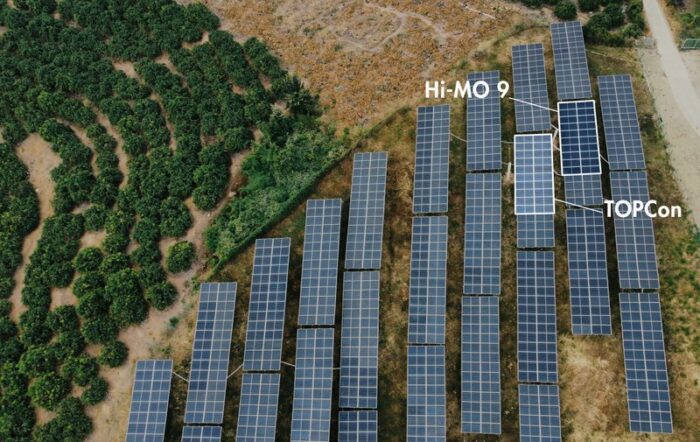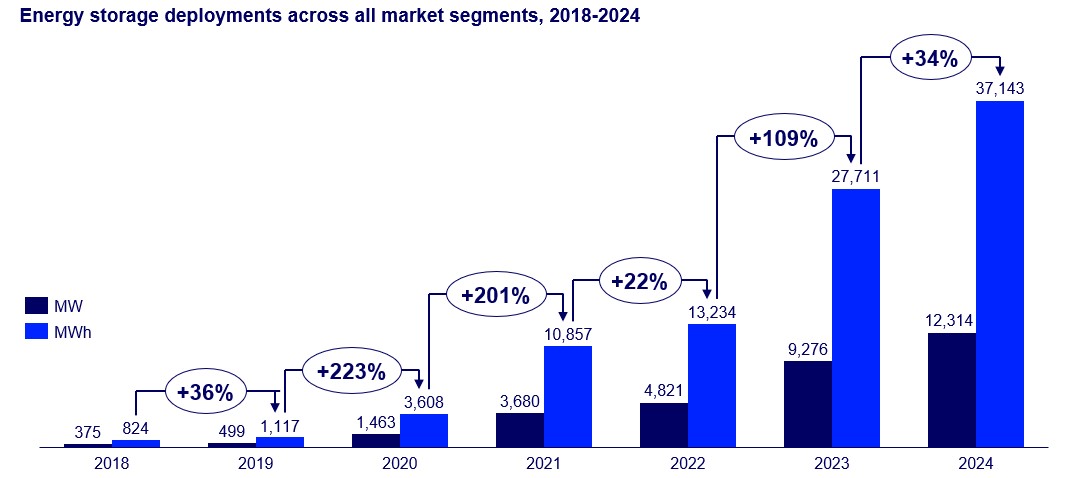LONGi reports impressive test data for Hi-MO 9 solar modules

LONGi is reporting impressive performance statistics for its Hi-MO 9 solar modules with second-generation back contact (BC) technology. LONGi, the globe’s top module brand by volume, conducted a test at its Hainan demonstration project in Sanya City, China, comparing Hi-MO 9 module performance vs. TOPCon modules in three key aspects: normal outdoor power generation, partial shading power generation, and post shading power generation.
Spanning just over two months (October to December 2024), and supervised by the China Central Certification, a domestic third-party certification body, the project’s performance was comprehensively displayed by comparing cumulative per-watt power generation and power generation across different time segments.
The demonstration site is equipped with four module arrays (20 Hi-MO 9 and 20 TOPCon modules each), with two arrays being shaded modules and the other two unshaded.
LONGi Hi-MO 9 tests
Data indicates that the Hi-MO 9 module, utilizing the second generation BC technology, substantially outperformed TOPCon modules. The cumulative per-kilowatt power generation gains were …
- normal outdoor power generation: 0.75%,
- Partial shading power: 32.62%,
- Post-shading power: 11.34%
Scenario One: Unobstructed Full Sunlight
Under ideal outdoor conditions without any shading, the Hi-MO 9 modules with second generation BC technology demonstrated a cumulative per-kilowatt power generation gain of 0.75% and an area-specific power generation gain of 5.22% over TOPCon modules. With temperature control, the Hi-MO 9 also showed an average module backsheet working temperature 0.69℃ lower than that of TOPCon modules, and a peak temperature differential of 3.5℃.
Scenario Two: Simulated Foreign Object Shading Like Bird Droppings
In utility power plants operating outdoors, issues like bird droppings, leaves, and dust causing partial shading of modules are common. Compared to mainstream TOPCon modules, Hi-MO 9 had a cumulative per-kilowatt power generation gain of 32.62% and an area-specific power generation gain of 37.34%. LONGi also reports the Hi-MO 9 achieved a breakthrough in thermal management; under partial shading conditions, Hi-MO 9’s backsheet average temperature was approximately 7.43℃ lower than TOPCon modules.
Scenario Three: Simulated Co-located Wind and Solar Shadow Shading
Persistent shadow shading is another important factor affecting outdoor power generation at centralized power stations. The demo project included several 5-meter-tall posts, that continuously shaded modules for 18 days. Monitored and confirmed by the Certification Center, Hi-MO 9 had a cumulative per-kilowatt power generation gain of 11.34% and an area-specific gain of 16.27%, with the Hi-MO 9 module backsheet average temperature still 0.83℃ lower than TOPCon modules.





Comments are closed here.